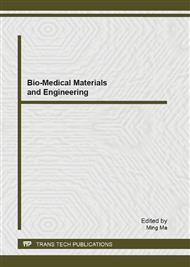p.71
p.77
p.82
p.87
p.93
p.99
p.106
p.110
p.118
Development of Mathematical Modeling and Dynamics for Biofilms
Abstract:
Biofilm formation, structure and dynamics properties play an important role in the effective performance of biofilm wastewater treatment reactors. Biofilm models are commonly used as simulation tools in engineering applications and as research tools to study biofilm formation and dynamics. This paper briefly outlines the present and past status of research on biofilm modeling, dynamics and experimental results. Biofilms constitute a spectrum of dynamical microorganisms, whose interaction with the surrounding environment and thereby induced dynamics dominates the complex properties of the living microorganism. Modeling of biofilms began with a low dimensional continuum description first based on kinematics and translational diffusions; later, more sophisticated microscopic dynamical mechanisms are introduced leading to the anomalous diffusion and dissipation encountered by various components in biofilms. We classify the models into roughly four classes: the reaction-diffusion dynamics model, the Capdeville biofilm growth dynamics model, the Cellular automata (CA) model, and the Phase field biofilm dynamical model.
Info:
Periodical:
Pages:
93-98
Citation:
Online since:
August 2013
Authors:
Keywords:
Price:
Сopyright:
© 2013 Trans Tech Publications Ltd. All Rights Reserved
Share:
Citation:


